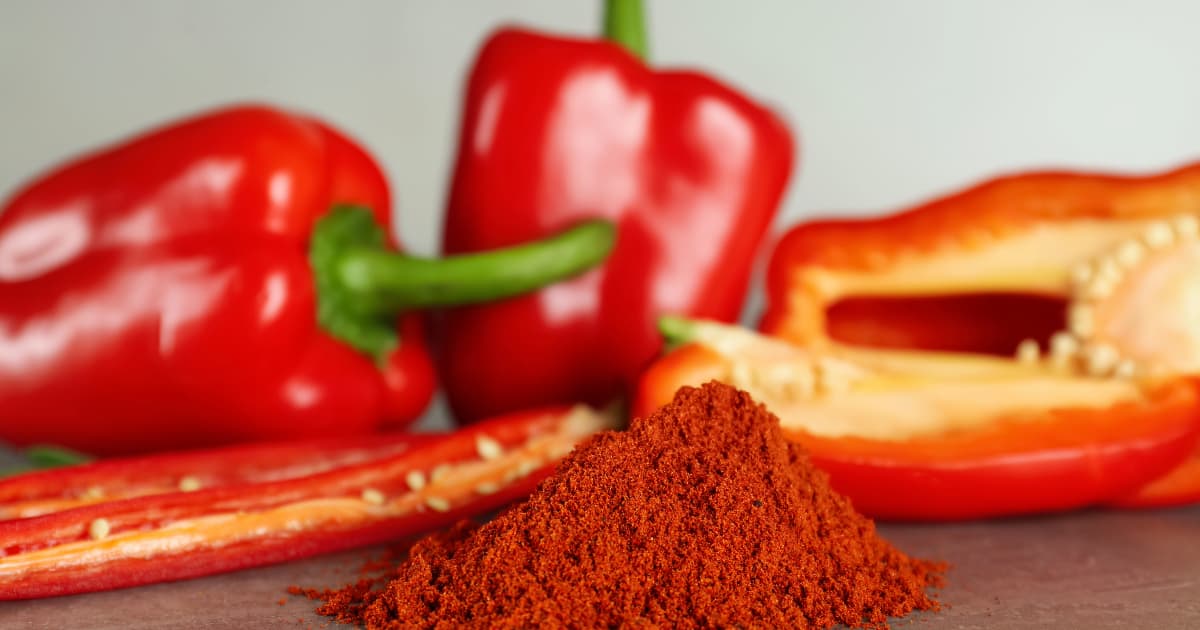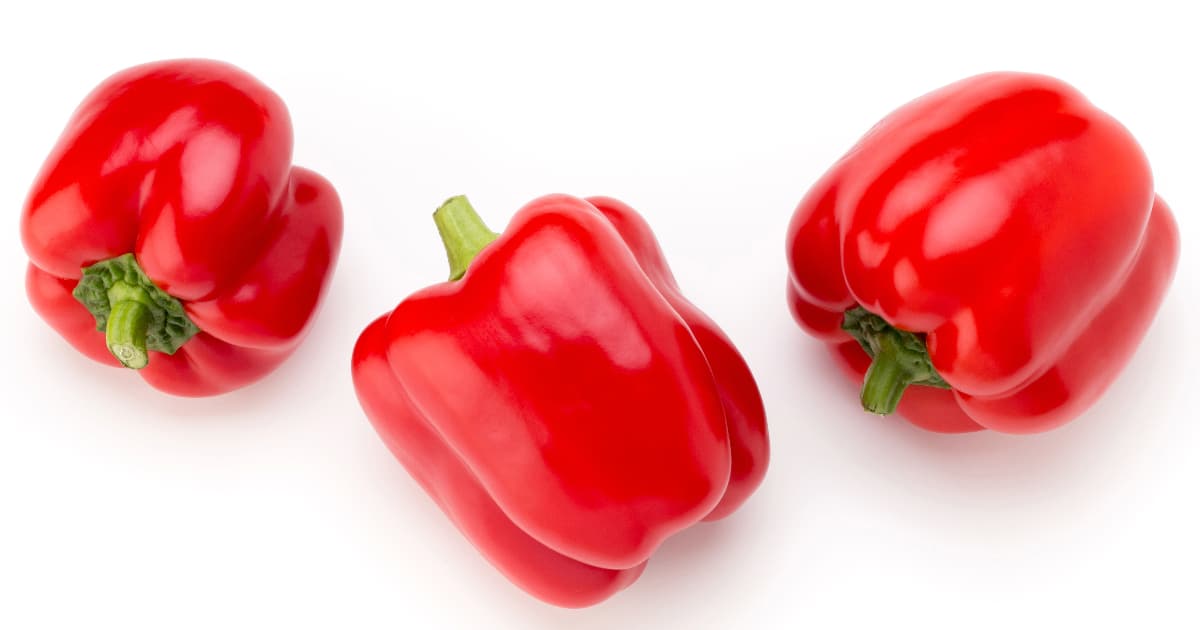Paprika is a versatile and colorful spice made from grinding dried fruits of milder varieties of the Capsicum annuum species, which includes both chili peppers and bell peppers. The name comes from the Hungarian word "paprika." This bright red powder is used to add flavor, color, and sometimes a touch of heat to dishes across many cuisines.

Paprika can range from mild and sweet to slightly spicy, depending on the types of peppers used to produce it and how it is prepared. It brings a peppery, slightly pungent taste and a deep red hue to recipes. While you may think of paprika as just a garnish, it can be an integral ingredient and seasoning in many dishes.
Paprika's Origins and History
The origins of paprika can be traced back to Central Mexico, where chili peppers and bell peppers have been cultivated for thousands of years. The peppers were introduced to Europe in the 16th century and gradually became an essential ingredient in Spanish, Hungarian, and other regional cuisines.
The ground red pepper spice we recognize as paprika today emerged in Hungary in the 19th century. It was originally known as "Hungarian pepper" before being dubbed paprika. The dry climate and long sunny days in Hungary were ideal for growing and drying the peppers used to make paprika.
Over time, paprika production expanded across Europe, Africa, and Asia, and eventually became popular worldwide. However, Hungarian and Spanish paprikas are still considered among the highest-quality varieties.
Types of Paprika
There are many types of paprika available, ranging from mild and sweet to hot and smoked. Here are some of the most common varieties:
Sweet Paprika

Sweet paprika, sometimes labeled "Hungarian sweet paprika," has a mild pepper flavor and only a subtle hint of heat. It is bright red in color. This variety is commonly used for adding vibrant color to dishes without significantly altering the flavor. Sweet paprika works well sprinkled on foods like deviled eggs, creamy dips, light-colored soups, and potato salads.
Hot Paprika
Hot paprika is made from peppers that contain more seeds and capsaicin, the compound that gives chili peppers their spicy heat. As its name implies, hot paprika brings a real kick of heat and deeper pepper flavor to recipes. A little goes a long way. Hot paprika can be used similarly to cayenne pepper to turn up the heat level in dishes like chilis, stews, and curries.
Smoked Paprika
Smoked paprika, sometimes labeled Spanish smoked paprika or pimentón, is produced by drying peppers over smoldering oak fires. This process gives smoked paprika a distinctive deep, earthy, smoky flavor. The heat level of smoked paprika can range from mild to spicy. Its unique taste makes it a staple in Spanish cuisine and works well for seasoning grilled meats, lending flavor to stews and chilis, and adding a smoky edge to rubs and marinades.
Sweet Smoked Paprika
Sweet smoked paprika offers the smokiness of traditional smoked paprika combined with a milder, sweeter pepper taste. It can provide rich smoky notes without as much heat. Sweet smoked paprika nicely complements vegetables, chicken, fish, and other dishes that benefit from a touch of sweetness balanced with smokiness.
Flavor Profile and Common Uses
The flavor and heat level of paprika vary significantly depending on the type. But in general, paprika has a peppery, somewhat bitter taste, and a sweet aroma. The spiciness ranges from nonexistent to quite pronounced, while the color spans from bright to deep red.
Paprika is valued both for its flavor and vibrant color. Its taste enhances many dishes, including:
- Goulash, paprikash, and other stews
- Chorizo and sausages
- Salad dressings, dips, and mayonnaise
- Cheese, potato, and vegetable casseroles
- Grilled and roasted vegetables
- Roasted chicken and pork
- Seafood dishes
- Rice dishes like paella
Paprika's eye-catching red color also makes it a popular garnish for foods like deviled eggs, cream soups, chicken noodle soup, mashed potatoes, and baked fish.
Professional chefs recommend adding paprika early in the cooking process to allow its flavor to fully develop. It is sometimes toasted briefly in oil to intensify its taste and aroma before being incorporated into a dish. Take care not to let it burn, as paprika's sugars can cause it to become bitter very quickly.
Nutrition and Health Benefits
In addition to contributing flavor and vibrant color, paprika provides some nutritional value. It is a good source of vitamin A, delivering over 20% of the daily recommended intake in just one teaspoon. Paprika also supplies vitamin B6, iron, potassium, and antioxidants like beta-carotene.
Some research suggests paprika may offer additional health benefits thanks to its antioxidant content. These compounds can help reduce inflammation and may also exhibit anti-cancer effects by slowing the growth of cancer cells. However, more studies are needed to determine paprika's definitive health benefits.
Overall, paprika can be a healthy way to add extra flavor and nutrition to your diet without significantly increasing calorie intake. But as with any spice, it should be used in moderation.
How to Select the Best Paprika
You can find paprika in the spice aisle at most major grocery stores. But not all paprika is created equal. Here are some tips for picking quality paprika:
- Check the expiration or packaged date - Fresher paprika will have better flavor. Try to buy paprika packaged within the past 6 months to 1 year.
- Buy whole peppers - Grinding whole dried paprika peppers just before use maximizes freshness and flavor.
- Know your varieties - Read the label to understand if you're buying sweet, hot, smoked, etc.
- Consider the country of origin - High-quality Hungarian, Spanish, and some South American paprikas have distinctive regional flavors.
- Examine the color - Vibrant blood red powder is fresher. Dull brownish paprika is past its prime.
- Give it a whiff - Paprika's aroma should be pleasantly sweet. Musty odors mean it's stale.
With so many types of paprika and regional varieties available, it's worth sampling different options to discover your favorites. Seek out reputable brands and specialty spice shops to experience paprika at its flavorful best.
How to Store Paprika
To retain optimal flavor and color, proper storage of paprika is important. Here are some tips:
- Keep paprika in an airtight container away from light and heat. A cupboard or pantry works well.
- If you have extra, consider refrigerating a portion to extend freshness.
- Transfer paprika from the plastic bag or clear glass jar it came in into a sealed opaque container. Light damages paprika over time.
- Avoid humidity. Dampness can cause paprika to clump or harden.
- Check expiration dates and aim to use paprika within 6 months to 1 year of purchase. Its flavor fades with long storage.
With its versatility, vibrant color, and nuanced flavor, paprika can be an exciting addition to recipes across the globe. Whether it's lending a peppery punch or pretty garnish, paprika's unique taste and hues bring delightful character to all kinds of savory and even sweet dishes. Experiment with the many varieties to discover your personal paprika favorites.
FAQ
What's the difference between paprika and cayenne pepper?
While both paprika and cayenne come from peppers, they have some key differences. Paprika is made from larger, milder pepper varieties that are dried and ground. This produces a mild, sweet powder. Cayenne pepper comes from hotter chili pepper varieties like cayenne chili peppers. Cayenne has a much spicier heat flavor profile compared to the milder paprika.
What dishes traditionally use paprika?
Paprika is an essential ingredient in many traditional dishes from Hungary, Spain, and Morocco. Examples include goulash, chicken paprikash, chorizo sausage, and tajines. Paprika's bright color and mild flavor profile nicely complement these cuisines.
Can you use paprika paste instead of powder?
Yes, paprika paste can substitute for powder in some instances. Paprika paste consists of paprika blended with olive oil or vinegar to form a thick sauce. It provides robust paprika flavor and can nicely coat foods during cooking. However, the measurements won't be equal when substituting paste for powder. Start with small amounts of paste until you achieve the desired paprika flavor.
Does paprika go bad?
Like any spice kept for an extended period, paprika can lose its flavor over time. To maximize freshness and flavor, try to use paprika within 6 months to 1 year after opening. Store it in an airtight, opaque container away from light and humidity. Properly stored, paprika can last up to 2 years before its color and flavor significantly degrade. Trust your nose - if paprika smells musty or dull, it’s likely past its prime.
Conclusion
Paprika is clearly much more than just a colorful garnish. With its range of flavors from mild and sweet to spicy and smoky, paprika can enhance recipes from goulash to tacos.
Seek out high-quality varieties and experiment with different types like hot Hungarian paprika or sweet smoked Spanish paprika.
Store paprika properly to maintain its flavor and color vibrancy. With its diversity, paprika delivers nuanced taste and beauty to spice up any dish.

